The Fox Film Corporation was an American independent company that produced motion pictures and was formed in 1915 by the theater "chain" pioneer William Fox. It was the corporate successor to his earlier Greater New York Film Rental Company and Box Office Attraction Company.

A silent film is a film without synchronized recorded sound. Though silent films convey narrative and emotion visually, various plot elements or key lines of dialogue may, when necessary, be conveyed by the use of inter-title cards.
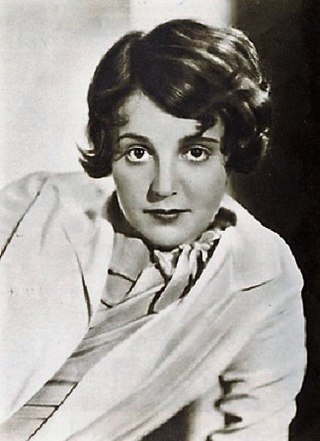
Sue Carol was an American actress and talent agent. Carol's film career lasted from the late 1920s into the 1930s; when it ended, she became a talent agent. The last of her four marriages was to one of her clients, Alan Ladd, from 1942 until his death in 1964.
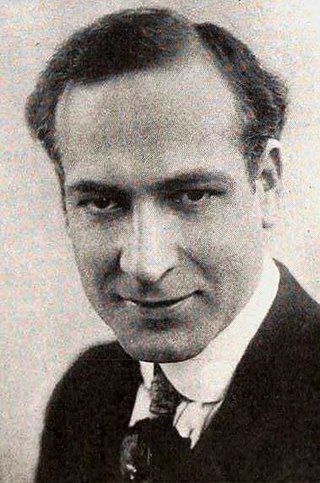
Edwin Carewe was a Native American motion picture director, actor, producer, and screenwriter.
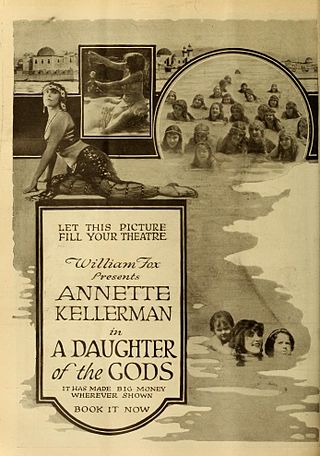
A Daughter of the Gods is a 1916 American silent fantasy drama film written and directed by Herbert Brenon. The film was controversial because of the sequences of what was regarded as superfluous nudity by the character Anitia, played by Australian swimming star Annette Kellermann. The scene is regarded as the first complete nude scene by a major star, which occurred during a waterfall sequence, though most of Kellerman's body is covered by her long hair. It was filmed by Fox Film Corporation in Kingston, Jamaica, where huge sets were constructed.

Mascot Pictures Corporation was an American film company of the 1920s and 1930s, best known for producing and distributing film serials and B-westerns. Mascot was formed in 1927 by film producer Nat Levine. In 1935, it merged with several other companies to form Republic Pictures.
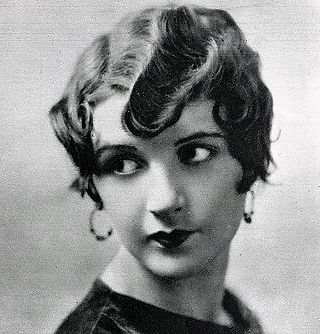
Sally Phipps was an American actress.

Madonna of Avenue A is a 1929 American pre-Code drama film directed by Michael Curtiz. It was produced and distributed by Warner Bros. It starred Dolores Costello in one of her first sound films. This is reportedly a lost film.

Why Be Good? is a 1929 American sound comedy film produced by First National Pictures starring Colleen Moore and Neil Hamilton. While the film has no audible dialogue, it is accompanied by a Vitaphone soundtrack that features a musical score with sound effects and some synchronized singing.

Romance of the Underworld is a 1928 American synchronized sound drama film produced and distributed by Fox Film Corporation. While the film has no audible dialog, it was released with a synchronized musical score with sound effects using the sound-on-film movietone process. Directed by Irving Cummings and starring Mary Astor, it was based upon a stage play called A Romance of the Underworld by Paul Armstrong. A previous version of the story was filmed as A Romance of the Underworld in 1918 by director James Kirkwood with Catherine Calvert in Astor's part.

The Great Divide is a 1929 American pre-Code Western film directed by Reginald Barker and starring Dorothy Mackaill. Released in both silent and sound versions, it was produced and distributed by First National Pictures. The film is a remake of The Great Divide, made at MGM in 1925 and also directed by Barker. There was another remake in 1931 as the full sound film Woman Hungry. All three films are based on the 1906 Broadway play The Great Divide by William Vaughn Moody.

Chasing Through Europe is a 1929 sound part-talkie American Pre-Code romance film directed by David Butler and Alfred L. Werker and starring Sue Carol, Nick Stuart and Gustav von Seyffertitz. In addition to sequences with audible dialogue or talking sequences, the film features a synchronized musical score and sound effects along with English intertitles. The soundtrack was recorded using the Movietone sound-on-film system. The film was produced by the Fox Film Corporation. Most of the film was shot on location in Europe.
New Year's Eve is a lost 1929 sound film drama produced and distributed by Fox Film Corporation and starring Mary Astor and Charles Morton. While the film has no audible dialog, it was released with a synchronized musical score with sound effects using the sound-on-film movietone process. Veteran Henry Lehrman, who had worked with Mack Sennett and Charlie Chaplin, was the director. Samuel L. Rothafel wrote the music for film. As was the case for the majority of films during the early sound era, a silent version was prepared for theatres who had not yet converted to sound. Max Gold was an assistant director.

Me, Gangster is a 1928 American synchronized sound gangster film directed by Raoul Walsh. While the film has no audible dialog, it was released with a synchronized musical score with sound effects using the sound-on-film movietone process. The film stars June Collyer, Don Terry, Anders Randolf and a young Carole Lombard.
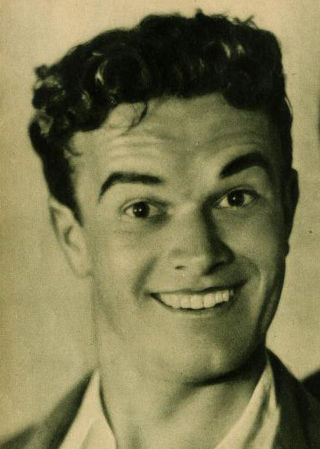
Nick Stuart was an Austro-Hungarian-born American actor and bandleader. His career spanned five decades, during which he appeared in over 50 films, more than half of them features, as well as film shorts, serials, and even one television appearance. He rose to stardom in such films as Girls Gone Wild and Chasing Through Europe, prior to expanding his business interests by creating a talent agency, and a popular upscale club in Hollywood.
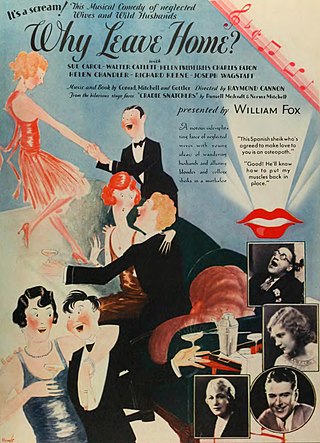
Why Leave Home? is a 1929 American pre-Code comedy film directed by Raymond Cannon and written by Robert Spencer Carr and Walter Catlett. The film stars Sue Carol, Nick Stuart, Dixie Lee, Ilka Chase, Walter Catlett, and Gordon De Main. The film was released on August 25, 1929, by Fox Film Corporation. It is a remake of Cradle Snatchers (1927). Why Leave Home? was later remade in 1943 as Let's Face It with Bob Hope.

Captain Swagger is a 1928 American synchronized sound crime drama film directed by Edward H. Griffith and stars Rod La Rocque. While the film has no audible dialog, it was released with a synchronized musical score with sound effects utilizing the RCA Photophone sound-on-film sound system. The film was released with both the sound-on-disc and sound-on-film formats. The film was produced and distributed by the Pathé Exchange company.

Win That Girl is a lost 1928 synchronized sound film comedy directed by David Butler and starring David Rollins and Sue Carol. It was produced and distributed by Fox Film Corporation. While the film has no audible dialog, it was released with a synchronized musical score with sound effects using the sound-on-film movietone process.
The Exalted Flapper is a 1929 American sound comedy film directed by James Tinling and written by H. H. Caldwell, Ray Harris and Matt Taylor. The film stars Sue Carol, Barry Norton, Irene Rich, Albert Conti, Sylvia Field and Stuart Erwin. While the film has no audible dialog, it was released with a synchronized musical score with sound effects using both the sound-on-disc and sound-on-film process The film was released on June 9, 1929, by Fox Film Corporation.

Red Wine is a 1928 American synchronized sound comedy film directed by Raymond Cannon and written by Andrew Bennison, Charles R. Condon and Garrett Graham. While the film has no audible dialog, it was released with a synchronized musical score with sound effects using the sound-on-film movietone process. The film stars June Collyer, Conrad Nagel, Arthur Stone, Sharon Lynn, E. Alyn Warren, and Ernest Hilliard. The film was released on December 23, 1928, by Fox Film Corporation.

















